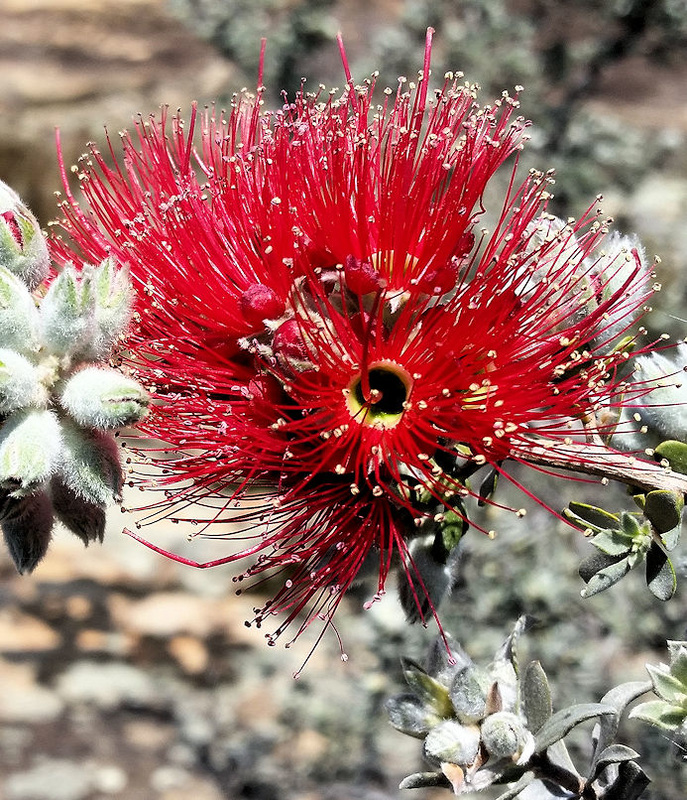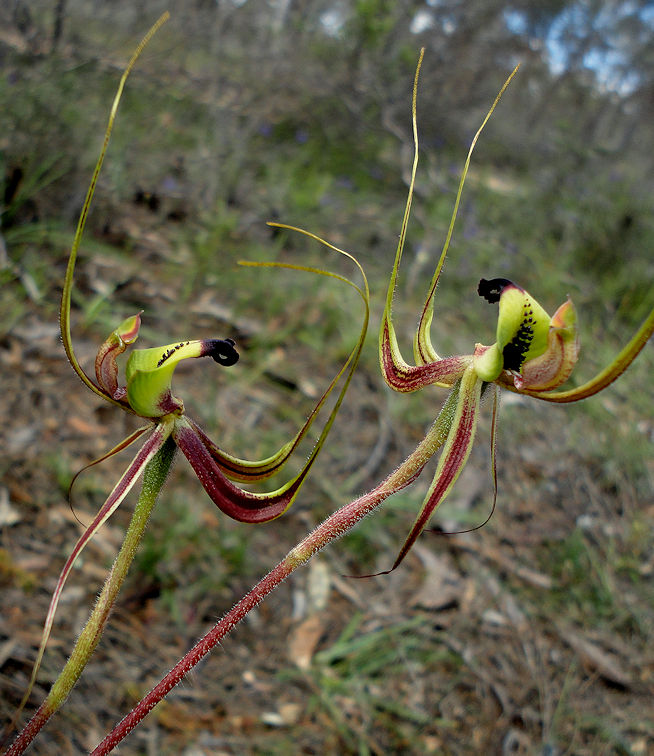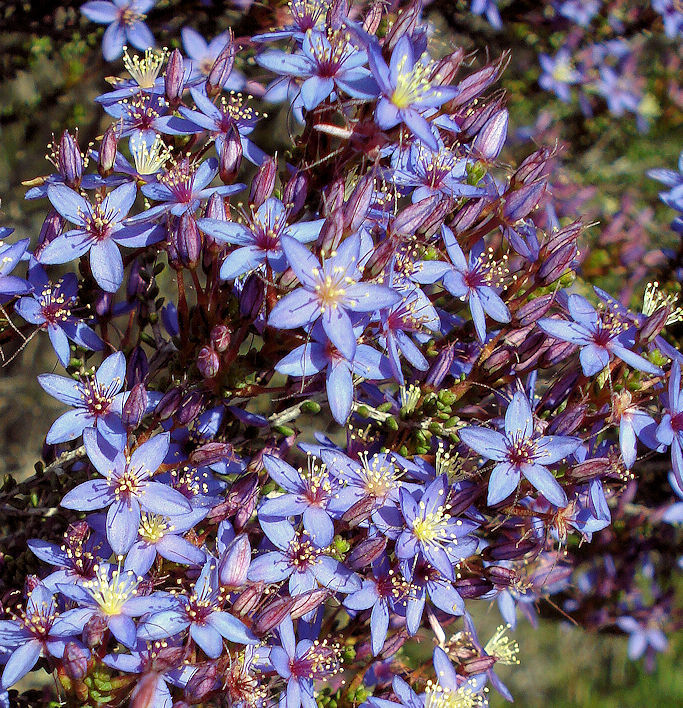
Like Foxes Lair, and Railway Dam. this is a must-see spot for visitiors to Narrogin.
Located 19 km east of Narrogin, Yilliminning Rock offers superb wildflower displays in the spring months, and an impressive 48 metre high granite inselberg which offers panoramic views over the surrounding bush and farmland. This historic spot also has a memorial salmon gum tree with information on George Brockway, a little known but amazing forester and conservationist. Dogs on leash are welcome.
There are picnic tables but no toilet. Fires and camping are not permitted. The rock is part of a larger reserve with interesting kwongan gravel wildflowers in October. Excellent birdwatching.
However there is more to Yilliminning than just the rock. Adjacent to the north is kwongan sandplain/ gravel country that has a wonderful array of wildflowers, and you can do a 17km return loop to Narrogin through scenic country to visit historic Yilliminning town site and Marramucking Well.
This stately tree commemorates George Brockway, one of Australia's greatest foresters, who well and truly earned the nickname of being "the forgotten conservationist". The tree is one of a grove of magnificent salmon gums (Eucalyptus salmonophloia) that were once widespread in wheatbelt clay valleys.
As Forester-in-charge of the WA Forests Department's wheatbelt and goldfields regions during the 1930s, 40s and 50s, George was notable for his passion for the trees of the WA inland, and his promotion of them for conservation, farm planting, townsite beautification, ornamentals and timber.
A few of his greatest projects are:
- The establishment of numerous bushland and conservation reserves in the wheatbelt and goldfields.
- He built the State's first fire lookouts and created the first effective forest firefighting system.
- He developed the first nurseries raising seedlings of our native trees, which led to overseas export of seed for revegetation in countries like Africa
- Establishment of arboreta and the mallet plantations at Dryandra and Highbury.
| George Brockway a life |
The rock itself is a 48metre high granite inselberg (bedrock outcrop), with commanding views of farm land and bush. I love the small oases of mosses, lichens and other plants including the August/September flowering Lemon Scented Sun orchids in water gaining areas, and gnarled Kunzea pulchella with its stunning red flowers in late spring, which thrives in cracks in the rock.
This blog shows how the rock formed .
The open sheoak woodland has great spider orchids in September, particularly Chapmans spider orchid Caladenia chapmanii that varies in colour from blood red to mainly yellow or white, Green spider orchid Caladenia falcata and similar but uncommon Smooth-lipped spider orchid Caladenia integra. Magnificent plants!
This blog shows highlights here in November.Great spot in the early morning or evening.
Vegetation changes to low scrub on gravel/yellow sandplain, which looks like a native garden. This is true kwongan country (scrubby vegetation without timber bearing trees) where a large range of plants have changed the soil by controlling access to soil phosphorus. Despite being prickly and less showy, close examination reveals remarkable leaf shapes and flowers. Come here in late October/early November to see the pink and yellow feather flowers (Verticordias) on yellow sand and profusely flowering proteaceae on gravels.
Keep driving north to take the scenic loop back to Narrogin (narrow bitumen and gravel roads) The country becomes very hilly with large dryandra scrub and gravel pits on red-brown stony gravels that have formed on dolerite rather than the sandy gravels from granites.
Return to Boundain North Road and turn right and after 3.5 km of pleasant farmland you will reach Yilliminning Road. Turn right to return to Narrogin.














